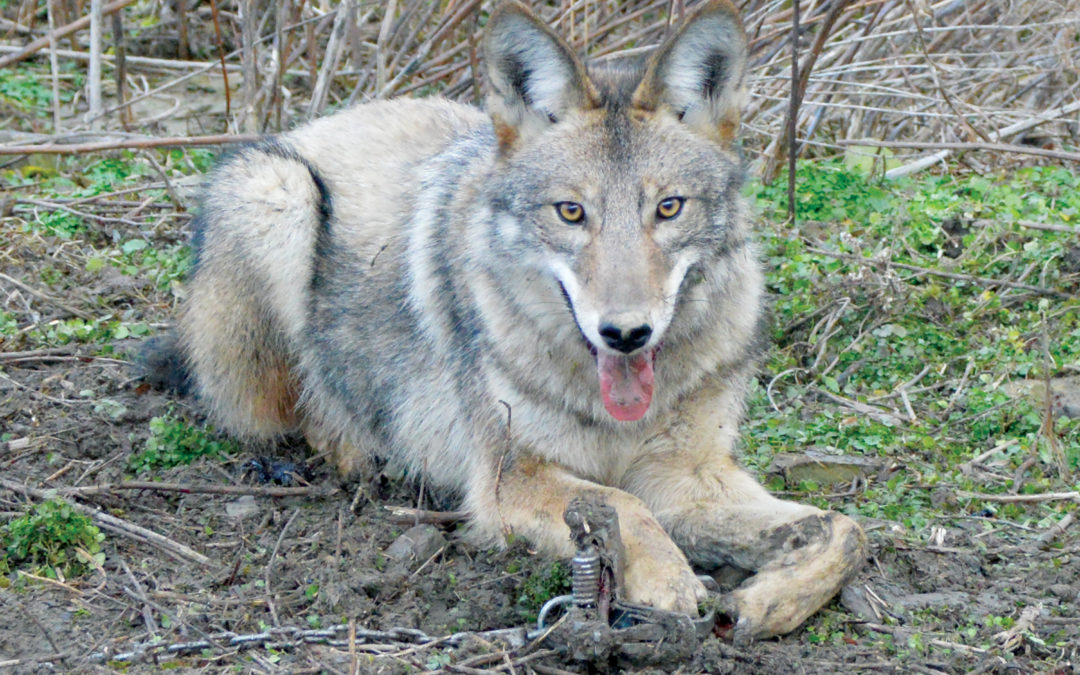“A picture is worth a thousand words.”
As both a writer and photographer, I have evaluated this quote from both ends. And after many years I can verify its accuracy. There is simply nothing which has the beauty and can convey as much information as quickly and effectively as a great photo.
I often seek photos from trappers for The Wisconsin Trapper, the American Trapper, and even to assist illustrate books I write. While surfing through Facebook trapping pages, I am often stunned by particular photos. My immediate reaction to them is “I wish I had taken that shot!” Taking a stunning photo is an intersection of subject, background, light, and time. These elements are constantly changing. Rarely can any photo be recreated exactly. Times marches on and the elements change. Great photos are moments in time.
What makes a great shot?
That is easier to ask than to answer. First of all, my trapping partner and I will sometimes make a set at a secondary location rather than the ideal location at a spot. Why would we do such a thing? We are looking ahead and know the primary location will yield so-so photos when we make a catch. The secondary location, though maybe not as productive overall for fur, will give the opportunity to take a really fantastic photo. The background can be that important.
Most of us won’t set in less than ideal spots just for a possible photo op with a future catch. That’s fine, but keep in mind how important the setting is. Once a catch is made and you want a photo, don’t just pull out your cell phone and snap a shot before the dispatch. Rather, look at the surroundings. Travel anywhere in a 360° circle around the set to find a more interesting background. Yes, the catch is the important part, but the background is that something special that will make it pop.
When considering where to take the photo, also look at angle. Most of us shoot while standing. We have a downward angle to the fox or bobcat. The more interesting photo is usually taken at a much lower level. Try shooting at the same level as the furbearer. Also, try to maneuver so you are actually shooting up at it. I’ve often laid down on the ground to get a better shot.
My trapline profit has shifted more to the writing I do than the pelts. Therefore time is taken to shoot from all around the animal and from different elevations. Digital files cost virtually nothing to take, so don’t be stingy on tripping the shutter.
An animal in stress is not the best photo. Some folks seem to crave a shot of a coyote snarling and snapping like some hell hound reincarnation. Sure, take these for your own records if you wish. For Facebook and print, seek shots where the animal is calm, seemingly at ease, fur all nice and not mud-matted, and no obvious trap. Sometimes a snag or swatch of grass can be used to hide a trap. If working with a partner, a quiet cameraman can get a shot with the trap on the animal’s off side.
Don’t take shots of an animal where the leg in the trap is held in what appears to be a very awkward position. I find this often with bobcats. This stance sends the wrong message. Remember, this is about perception as much as reality.
Every catch is a prize and photos will be needed for one’s personal records. Not every catch is suitable for taking a Facebook- or print-worthy photo. Always keep this in mind when photographing. Our minds are great Photoshops and make every scene great. The camera isn’t as user-friendly and will not record “doctored” shots. Instead, they will record what is actually there.
Readers send me loads of photos I cannot use. They take a photo of their partner with a good catch. They have tunnel vision keyed in on the catch and the partner holding it. Somehow the garage front, full trash cans, junk on the ground, and cigarette in the partner’s mouth are all overlooked. Just as selecting the background to photograph at the set, select the right setting for these trophy shots. A couple pine trees are in my yard. These have provided many hundreds of backgrounds for both products, people and trophy shots. Yet, right behind them is a major route.
One key to photo success is variety. I’ve already mentioned circling a furbearer while taking shots from all directions and angles. That’s variety. Because of different needs, don’t hesitate to take both horizontal and vertical photos, even of the same exact scene. While doing this take some distant shots to show the lay of the land, the set location, and so on. Then move in, taking medium range and then tight shots. Some awesome photos have the furbearer’s face filling the photo frame. With all these variety options, some catches will result in dozens, even hundreds, of shots—all different.
Sunsets … ah, sunsets! You can’t mess up a sunset photo. They are a mix of light and colors which are always interesting. Sunrises are similar. Whenever out near dusk and dawn, try to take catch photos in the surreal light of a horizon perched sun.
Today’s cell phones offer excellent quality and on-person accessibility. There is no reason to not take at least a few photos on your trapline. They trigger and enhance your memories. You may want to have some prints made for your den wall.
Between Facebook and print possibilities, having a photo record of your season makes sense. Raise the bar and take better photos. If it’s worth doing, it’s worth doing right! A poor photo can be regretted, but never a great shot. •


Nice Dog